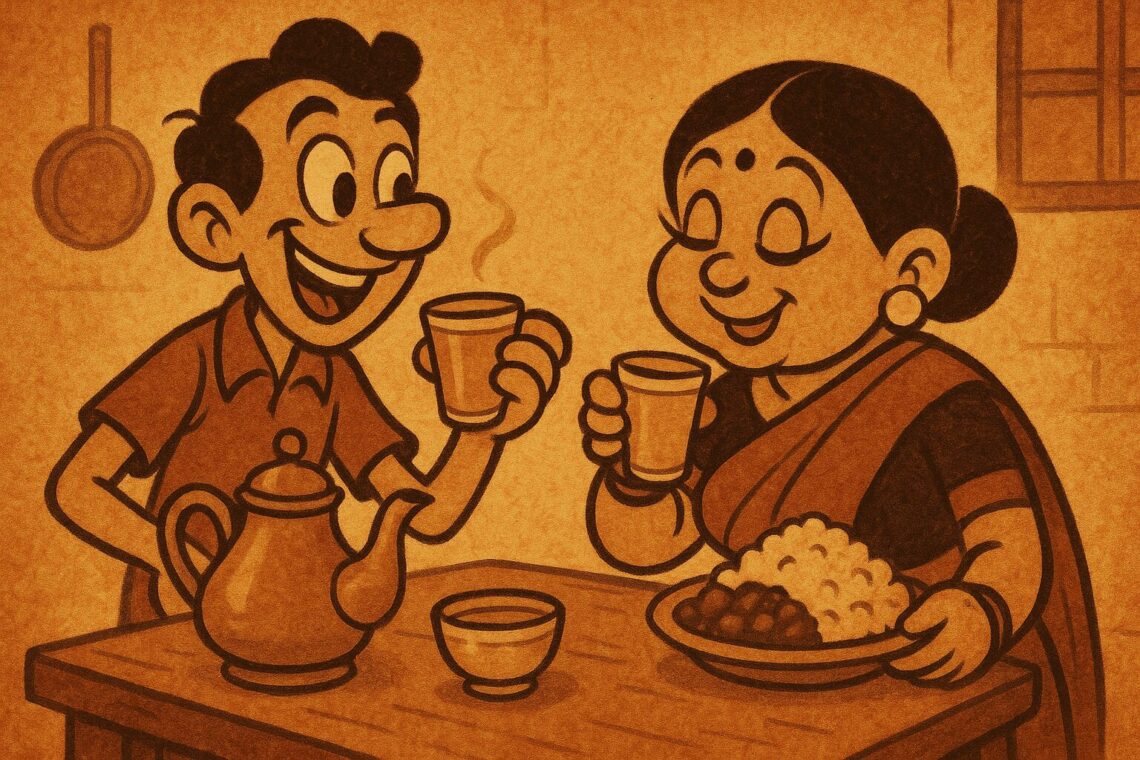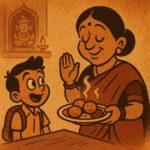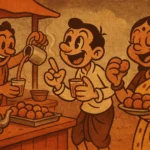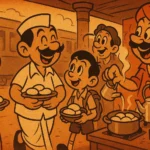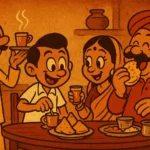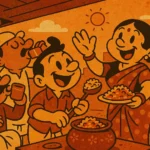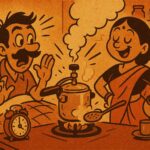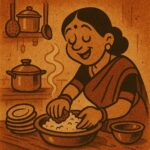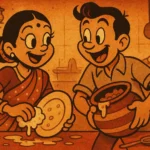There’s a moment in the early morning hours that happens across millions of Indian homes. It’s that brief, sacred pause when the kettle is put on, and the smell of simmering chai begins to waft through the air. In Mumbai, where I grew up, this ritual wasn’t just a matter of caffeine intake—it was the pulse of the day, the first of many rhythms that set the tone for everything that follows. From the busy streets of my hometown to my kitchen here in Austin, Texas, chai is not just a drink; it’s a ritual, a wake-up call, and yes, a sacred rite.
The Morning Chai: More Than Just a Drink
When I wake up, often too early thanks to the time zone differences from my Mumbai days, the first thought that crosses my mind is: “Chai banani hai.” It’s not just about thirst; it’s about something deeply ingrained in the DNA of every Indian. A cup of chai is like a personal prayer or a gentle greeting to the day. It’s the invitation to engage with the world, to pause for a moment and breathe before the rush of life takes over.
For many, this is the first act of the day—before checking emails, scrolling through social media, or even greeting loved ones. It’s that comforting ritual of boiling water with tea leaves, milk, sugar, and the occasional spice or two (I’m partial to a little cardamom in mine). And no, this isn’t the same as just making coffee or grabbing a quick drink—this is an experience. It’s about timing, the gentle simmering of the tea, the anticipation of that first sip that will reset your entire day.
The Cooking Choreography: Morning to Midnight
Now, don’t get me wrong. The first chai of the day is important, but it’s also a small part of a larger dance that continues throughout the day. In Indian culture, food is the rhythm of life, from morning chai to the midnight leftovers that somehow always taste better than dinner. Cooking in India (or cooking in an Indian home anywhere in the world) follows a choreography that is at once fluid and deeply ingrained in tradition. It’s a pattern of flavors, smells, and moments that shape our daily lives, giving structure and meaning to the mundane.
The morning chai sets the tone. But as the day progresses, you find the same ritualistic approach woven into every meal. Lunch is never just lunch; it’s an elaborate preparation of rice, dal, vegetables, and the necessary parathas to scoop up every last bit of the curry. In the evening, chai returns—this time with a snack. The one thing I’ve learned as a Mumbai guy living in Austin is that the concept of ‘snacking’ in India is something far more profound than the occasional chips and salsa. It’s about the crispy samosa, the garlicky pakoras, or the humble bhel puri, all shared in casual, unhurried conversation.
Food as an Anchor
Indian food isn’t just about taste; it’s about anchors. Food is what brings the family together, what punctuates our day, and in many ways, what keeps us grounded. Whether it’s the clatter of utensils at a bustling wedding or the quiet hum of the kitchen as dinner is prepared, food holds everything in place. It’s a kind of magic, really. The aroma of freshly made chai isn’t just about waking up; it’s about feeling connected to your roots, no matter where you are in the world.
For those of us who have moved away from India, especially those of us living abroad, food becomes an anchor for the culture we left behind. It’s how we make our new place feel like home. When I first arrived in Austin, I’ll admit—I missed the rush of the local chaiwala, the roadside stalls where tea is served in tiny, chipped glasses. But over time, I learned to create my own rhythm. I found my spices, my tea leaves, and my chai cups. And with them, I found my way back to the comforting mornings of Mumbai.
The Midnight Leftovers: A Lasting Connection
And then, of course, there’s the midnight snack. Every Indian knows that moment when the day has wound down, but hunger strikes in the middle of the night. The leftovers from dinner are sitting in the fridge, tempting you with their promise of comfort. It’s a common scene in many Indian households—those leftover rotis, the final scoop of dal, the half-filled container of rice. We don’t waste food, and that last bite, whether it’s eaten at 10 PM or 2 AM, is as much a part of the day as the first cup of chai.
In fact, I’m convinced that midnight leftovers are where some of the best food experiences happen. It’s in that sleepy, satisfied haze that you taste the food differently, appreciating its simplicity and warmth. It’s almost as if food in India exists not just in the light of day, but also in the quiet, uncelebrated moments of the night. And that’s what food is in India—a constant companion, always there to comfort, nourish, and ground us, from the first chai of the day to the midnight leftovers.
Food as a Story
What’s truly remarkable about Indian food is its ability to tell stories. The flavors, the textures, and even the cooking techniques are all tied to history and tradition. From the intricate spice blends of a Hyderabadi biryani to the street-food hustle of Mumbai’s vada pav, every dish carries with it a tale of place, culture, and people. And in our homes, food is more than a meal—it’s a language, a way to tell our story to the next generation.
For me, the story of my day begins with that first chai. It’s a symbol of home, of tradition, of comfort. And while the world around me may be fast-paced and ever-changing, the rhythm of chai and food will always anchor me to my roots, to the places and people that have shaped who I am today. So next time you make your morning cup, remember that it’s not just about the caffeine—it’s about everything that comes with it, the stories, the rituals, and the flavors that make life a little bit more beautiful.
Disclaimer: While I’m all for the perfect morning chai, don’t be surprised if you catch me sipping on a late-night cup of chai with a side of leftover biryani. It’s just how things are done in Mumbai, and trust me, it’s a tradition worth keeping.
Born in Mumbai, now stir-frying feelings in Texas. Writes about food, memory, and the messy magic in between — mostly to stay hungry, sometimes just to stay sane.

